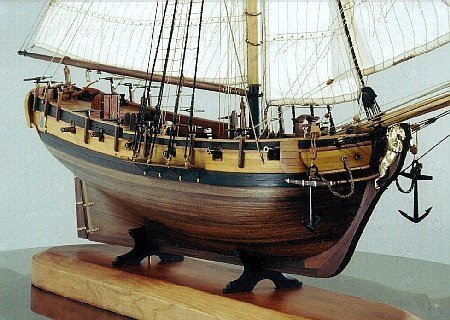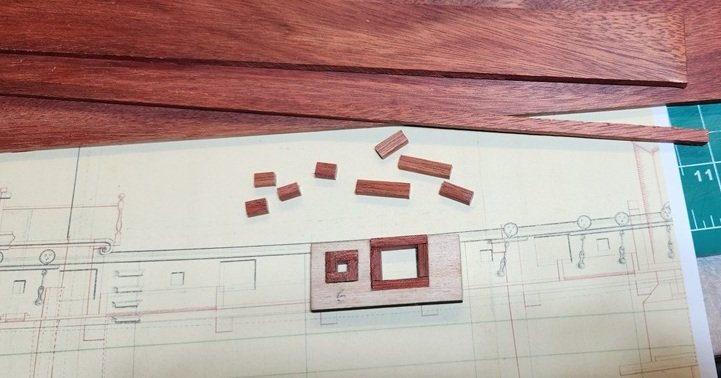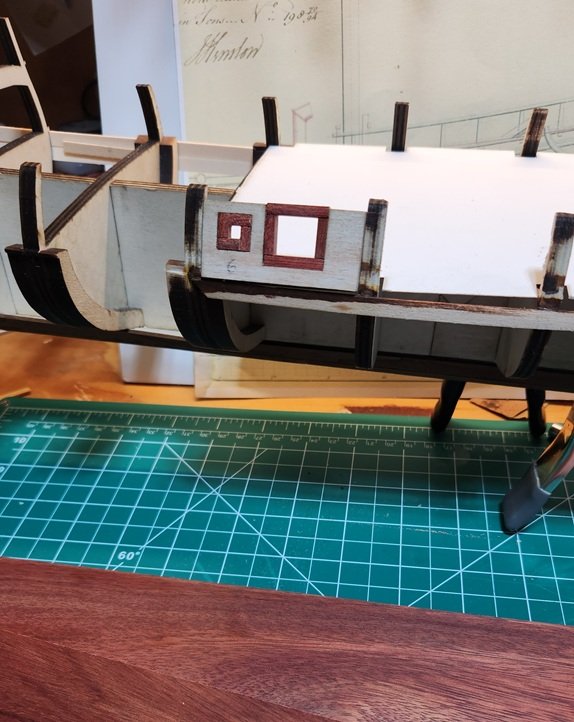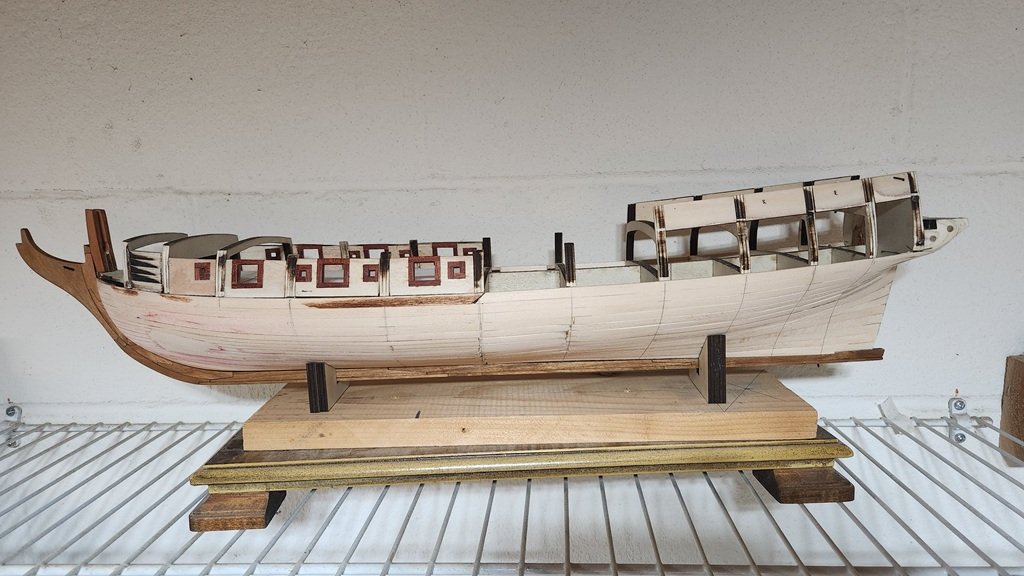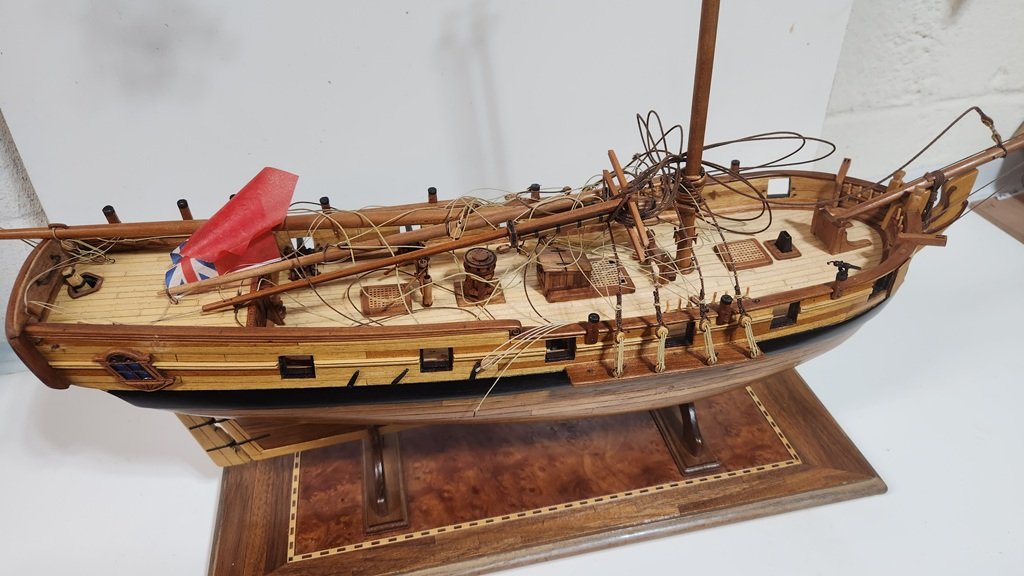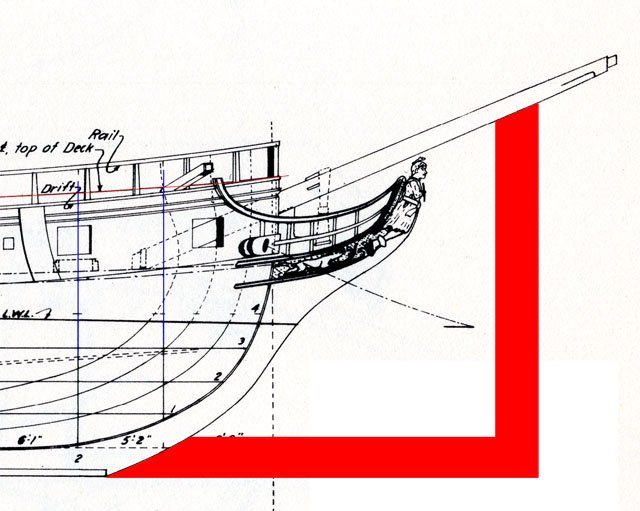-
Posts
3,110 -
Joined
-
Last visited
Content Type
Profiles
Forums
Gallery
Events
Everything posted by Gregory
-
"Trinidad" 1881 wreck located in Lake Michigan
Gregory replied to Ian_Grant's topic in Nautical/Naval History
Great! Here is a link to a 3D model of the wreck. It's included in the linked article but I thought I would provide a shortcut.. Schooner Trinidad (1867-1881) - 3D model by Zach Whitrock (@Whitrzac) [3d14b04] -
CNC-Model Making
Gregory replied to Jefta's topic in CAD and 3D Modelling/Drafting Plans with Software
Did you by chance check out " Mesh Cam ". Your experience with VCarve has me leaning in that direction, but Mesh Cam looks pretty robust also. I like this info from their web site: -
Any indication if it will include rigging detail?
- 82 replies
-
- Yacht Mary
- Mamoli
-
(and 1 more)
Tagged with:
-
You made me dig out my digital copy of that Ships in Scale volume to confirm it's a great article. I have my 2nd Mary kit on the shelf and look forward to getting around to it some day. There is a Mary-like model of a ship called Max Emanuel built by Theodor Klaas. It has some amazing detail that I would strive to incorporate on my next Mary Max Emanuel One of the detail images.
- 82 replies
-
- Yacht Mary
- Mamoli
-
(and 1 more)
Tagged with:
-
Whats the best book on rigging for a beginner?
Gregory replied to Stuka's topic in Masting, rigging and sails
@Stuka Regarding Lees, he makes no mention of cutters, but some details might apply to cutters in a general way. I have found it more useful for describing some detail in these discussions than I have for rigging a model. -
Another 'spin' on a ropewalk
Gregory replied to Dziadeczek's topic in Rope Making/Ropewalks's Discussions about Rope Making
That rope looks very good. My experience has been that irregular laying up occurs if I don’t have tight, equal tension on all the strands. You have inspired me to experiment with a wire core. I'll let you know what happens. -
Another 'spin' on a ropewalk
Gregory replied to Dziadeczek's topic in Rope Making/Ropewalks's Discussions about Rope Making
Are you saying you have trouble with 4 strands without a core? -
Another 'spin' on a ropewalk
Gregory replied to Dziadeczek's topic in Rope Making/Ropewalks's Discussions about Rope Making
I have that type of rope walk and have considered trying to use a wire core to make it easier to fashion foot ropes and such. I fail to see a good reason for using a rope core, other than increasing the diameter of the the rope, and that can be done with additional strands or yarns, or bigger thread. Because the rope contracts as it is laying up, the wire would have to be free floating and shorter than the starting length of the strands. I would have to experiment with how to accomplish that, if at all. -
Whats the best book on rigging for a beginner?
Gregory replied to Stuka's topic in Masting, rigging and sails
Here is one of the discussions I referred to: Of particular note is a link to high resolution photos of the model. Rigged model of a late 18th century naval Revenue Cutter Looking at the model, Petersson's book follows it very closely if not perfectly. Still, there is the question of whether or not the model was rigged accurately. If you go through that topic carefully, we found many differences between several models, and none of it necessarily wrong. In the end, if the rigging reflects what would make the ship sail as a ship is supposed to sail, I would say it's good. -
Whats the best book on rigging for a beginner?
Gregory replied to Stuka's topic in Masting, rigging and sails
Period Ship Models covers one model of a frigate. A typical 3 masted, fully rigged ship. Fore & Aft covers three models, one of which is an unnamed English cutter. -
Whats the best book on rigging for a beginner?
Gregory replied to Stuka's topic in Masting, rigging and sails
Something to keep in mind. Petersson is an artist rather than an authority on rigging. He drew some very good illustrations of what he observed on some contemporary models. There is no reason to believe the rigging on those models is completely accurate with regard to actual practice. We have had some discussions about some of the details of his books that seem questionable, however, for the most part the books seem to be reliable. I’ll provide a link later to a discussion about the model of the cutter in the “Fore & Aft” book. There are some high resolution photos of the model. -
Whats the best book on rigging for a beginner?
Gregory replied to Stuka's topic in Masting, rigging and sails
A good book of knots is good to have in your library, as well as books that explain the principles of rigging, however as others have mentioned, the type of knot is not as important as how tie off your rigging in a way that looks good at scale. Actual practice may not lend itself to realistic modeling. The size of your model rope and fittings will be your first consideration. Try to get that as accurate as possible. With Sherbourne I think your best reference for technique will be to look at some of the more detailed cutter builds here. HM Cutter Alert by Thukydides has a lot of detailed rigging information. I would also look at a couple of the Cheerful builds. In particular; Chuck's prototype and the build by Glenn Barlow. Chuck's rigging detail starts about here. Glenn's about here. You can also download the Cheerful instructions at the Syren Ship Model site . Scroll down the page to see "Download the Monograph chapters below!!!" Rigging starts in chapter 12. Last, but not least, if you really want to feel challenged, look at La Créole 1827 by archjofo. While the ship is quite different from a cutter, the builder, Johann, presents a lot of information of how to accomplish detailed rigging that looks like the real thing. A small example of Johann's work. You would have to sift through the log to see how he does those seizings and other details. -
I haven't been completely idle since October, just lax in updating the log. I have resurrected my Resolution build and hopefully will get more enthused about Rattlesnake; perhaps switching back and forth as the mood suits me. I have mentioned more than once that I prefer the natural wood look, and I really don't enjoy painting. I am using some bloodwood to frame the gunports. I Created 1/8 bass fillers that go between the bulkheads, where I then lined the gun and oar ports with the bloodwood. The first planking below the wales is complete. Obviously I didn't go for beauty in this phase, but I feel I have a good base for the final planking. Above the wales will be essentially single plank. The two forward gun ports will be closed so they will not be framed. That's it for a while.
-
Sweeps and Oars
Gregory replied to dafi's topic in Discussion for a Ship's Deck Furniture, Guns, boats and other Fittings
Any reason to believe colonial oars would have been significantly different for this time period? -
Neverland Hobby - is this a legit model manufacturer?
Gregory replied to bruce d's topic in Plastic model kits
They appear to be located in Belgium and have been around for a while. -
Well, hard to believe it's been almost three years since I worked on Resolution. I was in the home stretch with rigging when the cat decided all that 'string' looked like something that needed special attention only a cat can give. The mast snapped right below the trestle trees, and fortunately nothing else actually came apart or broke. I feel pretty sure I can get the mast back in position and repaired without having to actually re-do any of the rigging that was already in place. I had just started the ratlines so I hope to be able to continue with that in the near future.
-
-
I have heard of gardenia, and we probably have some locally ( north Georgia ). I'll have to keep an eye out. It will be interesting to see how it looks and what you use it for. I think lot of slow growing ornamental shrubs/trees would be suitable for model making. They usually have a very tight straight grain. Pieces thicker than 2" are probably hard to come by, so your milling options would be limited.
-
For modeling purposes, it might be easier to rig the shrouds before placing the tops.
About us
Modelshipworld - Advancing Ship Modeling through Research
SSL Secured
Your security is important for us so this Website is SSL-Secured
NRG Mailing Address
Nautical Research Guild
237 South Lincoln Street
Westmont IL, 60559-1917
Model Ship World ® and the MSW logo are Registered Trademarks, and belong to the Nautical Research Guild (United States Patent and Trademark Office: No. 6,929,264 & No. 6,929,274, registered Dec. 20, 2022)
Helpful Links
About the NRG
If you enjoy building ship models that are historically accurate as well as beautiful, then The Nautical Research Guild (NRG) is just right for you.
The Guild is a non-profit educational organization whose mission is to “Advance Ship Modeling Through Research”. We provide support to our members in their efforts to raise the quality of their model ships.
The Nautical Research Guild has published our world-renowned quarterly magazine, The Nautical Research Journal, since 1955. The pages of the Journal are full of articles by accomplished ship modelers who show you how they create those exquisite details on their models, and by maritime historians who show you the correct details to build. The Journal is available in both print and digital editions. Go to the NRG web site (www.thenrg.org) to download a complimentary digital copy of the Journal. The NRG also publishes plan sets, books and compilations of back issues of the Journal and the former Ships in Scale and Model Ship Builder magazines.

